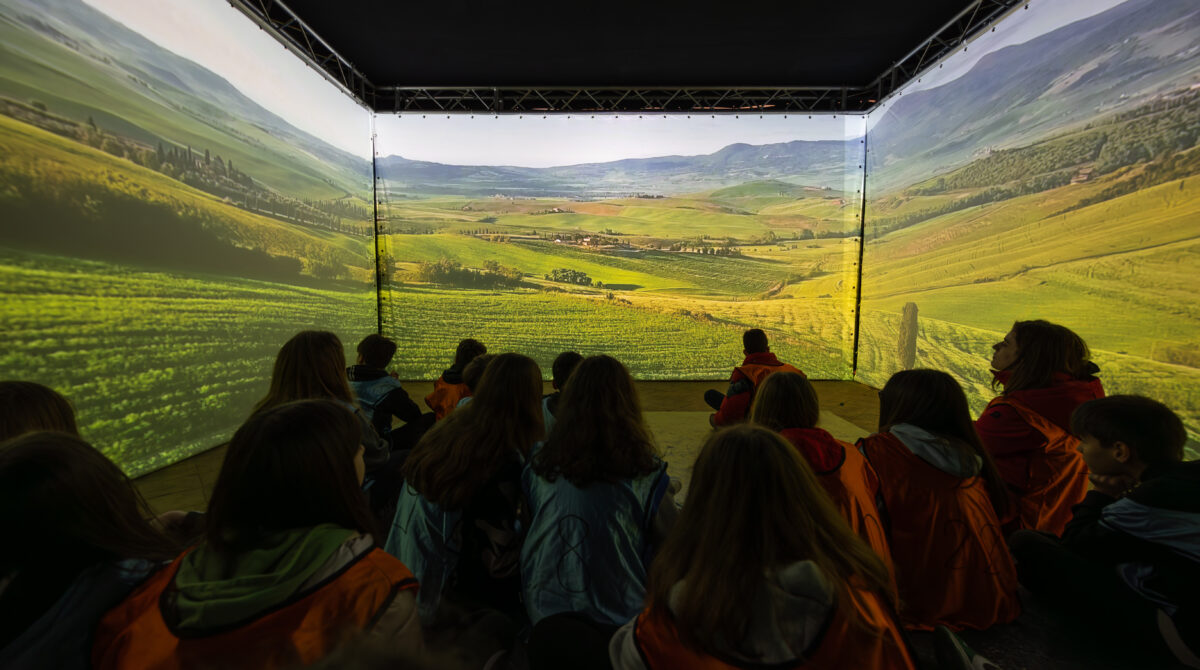How did the project “Students and Climate Change: An Immersive and Sensory Journey” originate, and what are its goals?
The project is closely tied to our mission: as an NGO, we engage in international cooperation in various countries around the world, and we also carry out educational, awareness-raising, and training activities, which we implement in schools across Italy. In particular, we are highly attuned to the issue of environmental sustainability.
The project employs innovative methodologies to promote active participation among young people, to elevate their knowledge and skills on the subject, to provide tools they can use, to suggest different lifestyles, and to undertake actions aimed at mitigating the effects of climate change.
Our educational activities typically involve individual schools or specific contexts for limited periods of time. However, thanks to the 8×1000 funds from the Italian Buddhist Institute Soka Gakkai, we can ensure greater continuity and reach a broader audience. We have also identified a series of indicators to evaluate the impact of the project’s proposals and actions.
To simplify, we can say that the project is divided into three main components.
The first involves education and training aimed at young people and teachers to expand their knowledge and skills.
The second component involves active participation to put into practice, through concrete actions, what has been learned.
The third component is the most innovative part of the project, as it involves the use of two tools: a web platform that uses gaming as a tool for participation and an immersive and sensory experience.
It is essential to find innovative ways to engage young people and to use a language that resonates with them, in order to establish empathy and prevent these issues from “slipping away.”
What does the immersive experience entail, and how are the five senses involved?
The goal of the immersive experience is to make students feel certain sensations firsthand.
The immersive journey on climate change, called “2060,” is a role-playing game, a theatrical experience where participants are placed in a specific context and become the protagonists.
Visitors enter a space with very large video screens on the walls and audio featuring sounds from various environments. A reality is recreated that reflects the year 2060, where the climatic conditions in some countries, including Italy, make living there impossible: there are floods, the oceans have risen, pollution is severe, and extreme weather events occur.
The inhabitants must abandon their countries, applying for legal departure but being denied; therefore, they are forced to undertake illegal routes.
Visitors interact with actors who play the role of traffickers, are blindfolded, and led out in small groups to begin an immersive journey that takes them through different rooms, each representing a different environment.
Being blindfolded, they can only perceive through touch, hearing, and smell. Essentially, they experience firsthand both the consequences of climate change and what it feels like to be an irregular migrant.
The final room is where they share the sensations they have experienced, and an educator acting as a mediator offers a final pact where they can choose from a list of ten actions to take to change their lifestyle and improve their environment.
How can we ensure that the positive effects of this experience last over time?
The students are very young, so it is difficult to guarantee this, but we know that experiencing certain emotions firsthand is something that leaves a mark.
Additionally, there is a web platform that will be active throughout 2025, where the students who participated in the activities can continue to engage individually or as a class group, applying the knowledge they have acquired. The platform’s activities encourage them to experiment within their local context, daily life, and in their lifestyle and consumption choices.
So far, the journey has been very well received, as has the platform: at the end of the journey, we conduct a questionnaire with the students about their expanded knowledge, what they experienced, what they liked, and what they didn’t like, and the majority of the responses are positive. We will also take negative feedback into account to make improvements.
Teachers have also responded very positively; we have seen that the use of the platform is not viewed as an additional task (in the school world, some projects are seen as imposed from above), but as an opportunity that can be used at times they consider important in relation to the educational path.
